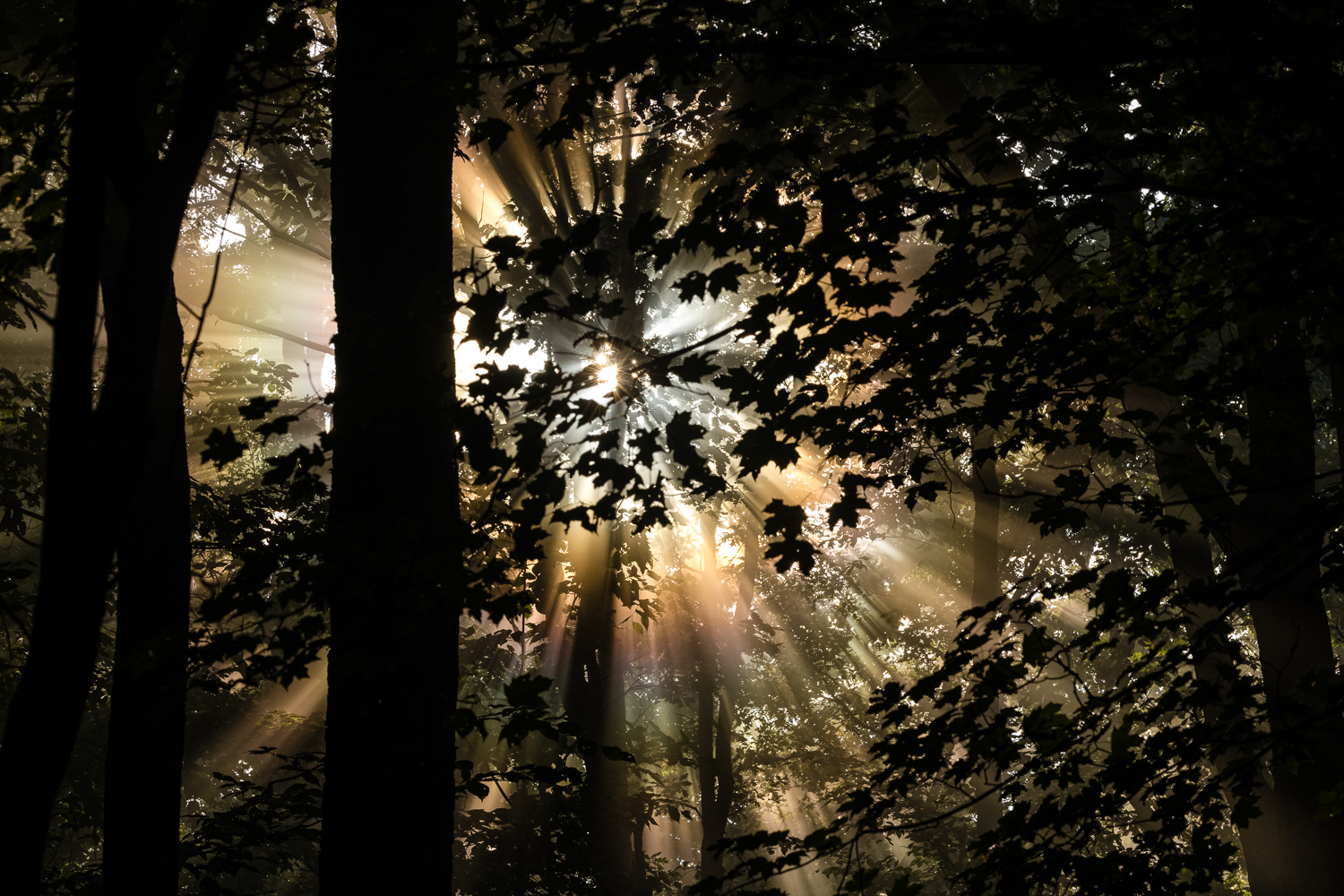
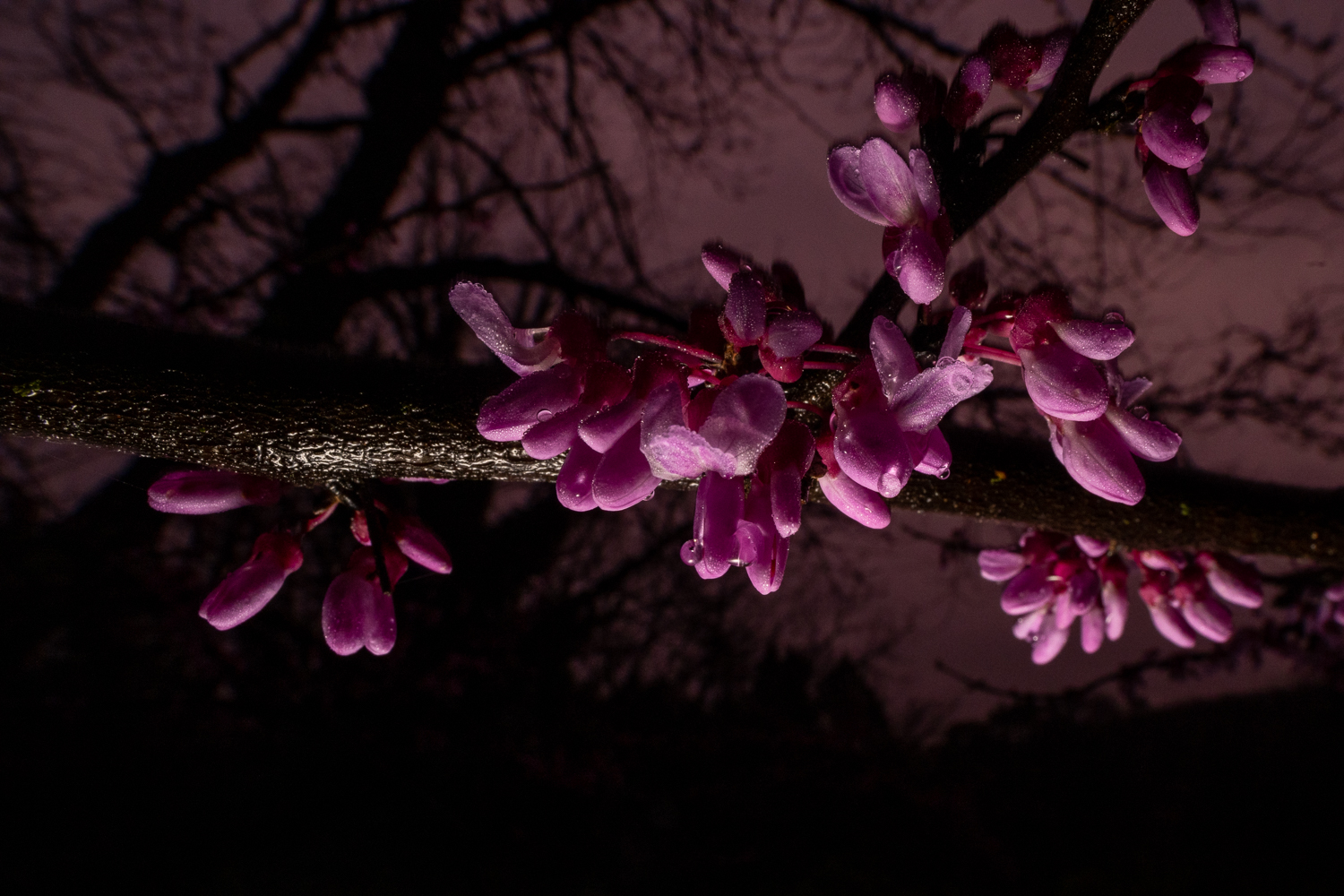
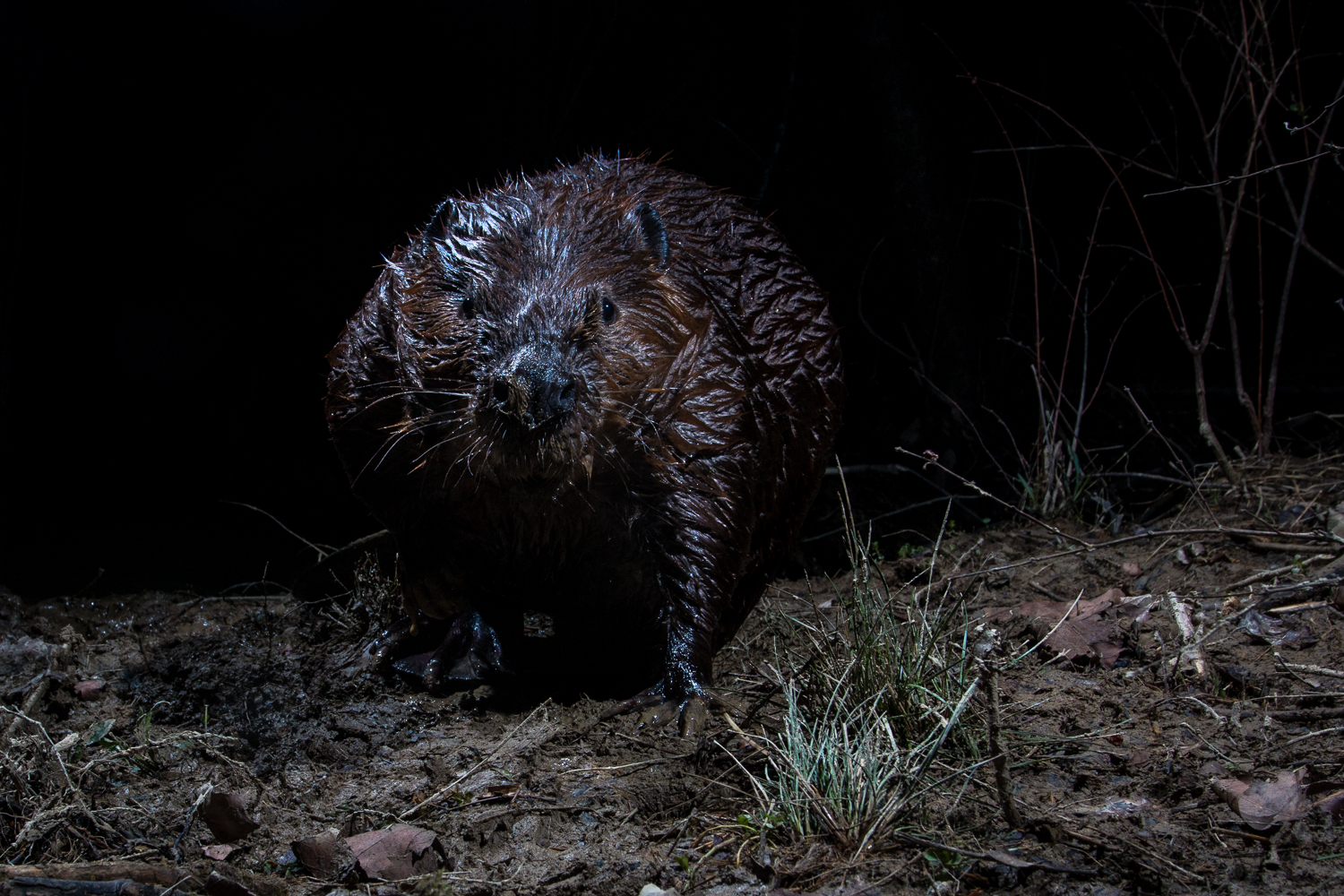
While living in the heart of Bernheim Forest in Kentucky, Carla Rhodes tasted the pea-like buds of Eastern Redbud trees in springtime. In summer, she breathed in the spicebush-scented air. After dark, she heard the call of eastern whip-poor-wills, their song like whistles in the night. Every morning, she awoke the find a yellow garden spider building her web along the door of the cabin where she stayed. She greeted her as she left each day to explore.
Rhodes, a conservation photographer, was the first Environmental Artist in Residence at Bernheim Arboretum and Research Forest. Although she grew up in “Kentuckiana,” she’d never before heard of this 16,137-acre area, a wellspring of clean air and water. She was stunned to learn of its existence.
While there, Rhodes lived among beavers, otters, Virginia opossums, amphibians, and bluff vertigo snails. At less than two millimeters, these “microsnails” can only be found in thirty known populations. Listed as globally imperiled, they were discovered in the area by Lori Schroeder, a researcher and malacologist.
The photographer also learned about the hidden springsnail, a species found in just five places globally. Joe Cichan, a volunteer naturalist, introduced the photographer to an isolated population he’d discovered of four-toed salamanders. Along the way, she also made some discoveries of her own: after setting up a camera trap meant for a beaver, she was astonished to find a photograph of an American Bittern, a solitary heron who hadn’t been documented in Bernheim for decades.
Life in Bernheim was defined by surprises and discoveries, both small and large. Rhodes had permission to explore freely, with the guidance of Bernheim’s natural areas team, venturing into areas usually not visited by the public. “It was hard to remember to sleep,” she admits. She sat beside a patch of Kentucky glade cress, a rare and threatened endemic flower.
Photographing Bernheim was not a responsibility she took lightly, especially given the presence of threatened flora and fauna. “Some general guidelines I follow include keeping a respectable distance from my subject, watching for any signs of stress, and not damaging the habitat,” she explains.
“Post-photographing, I protect the wildlife by never sharing the exact location of the photo, and always making sure GPS/any identifying location details are stripped from the metadata of my photos.” The use of camera traps was also, in part, an ethical decision, allowing her to capture animals in their element without interference.
Unfortunately, the future of this natural oasis isn’t guaranteed. In 2018, Bernheim Forest learned about a natural gas pipeline, proposed by Louisville Gas and Electric (LG&E). “Bernheim Forest has been fighting the natural gas pipeline for almost four years now and is headed back to court tomorrow, January 10th,” Rhodes says.
“The proposed twelve-mile gas pipeline path would fragment Bernheim’s Cedar Grove Wildlife Corridor, breaking up a mostly intact forest, while destroying habitat and migration routes for countless wildlife, and would impact clean streams for decades—not to mention the energy company taking other land along the route from neighboring landowners, while putting the inhabitants of all of this land at risk.”
The pipeline puts at risk four wildlife species classified as federally endangered. Critically endangered bats live along the corridor. The bluff vertigo snails, just recently discovered in the area, would also be imperiled. “Their vuggy limestone habitat lies directly in the path of the pipeline,” Rhodes explains. She still remembers seeing them for the first time: it had just rained, and the snails moved across the landscape, tiny and marvelous.
“The experience of being Bernheim’s inaugural Environmental Artist in Residence has given me endless hope the beauty and power of nature triumphs all around us, whether it’s in hidden places or in our own backyards, and solidifies we only have to open our eyes to appreciate it,” the artist continues. “I’m always worried for the future of the planet, but whenever I’m in direct contact with nature, I am filled with endless wonder, hope, and awe.”
Rhodes has returned to New York, but the memory of Bernheim Forest lingers in her bones. And she’s managed to bring some of the forest with her. “When I went back home to the Catskills, I planted two Eastern Redbuds in my yard,” she tells me. In springtime, they’ll bloom once more—offering a daily reminder of a magical place in Kentucky, the creatures who live there, and the people working to protect them.
Learn more about Bernheim Forest and the work being done there by visiting their website. To help protect the future of this extraordinary place, consider making a donation or volunteering.
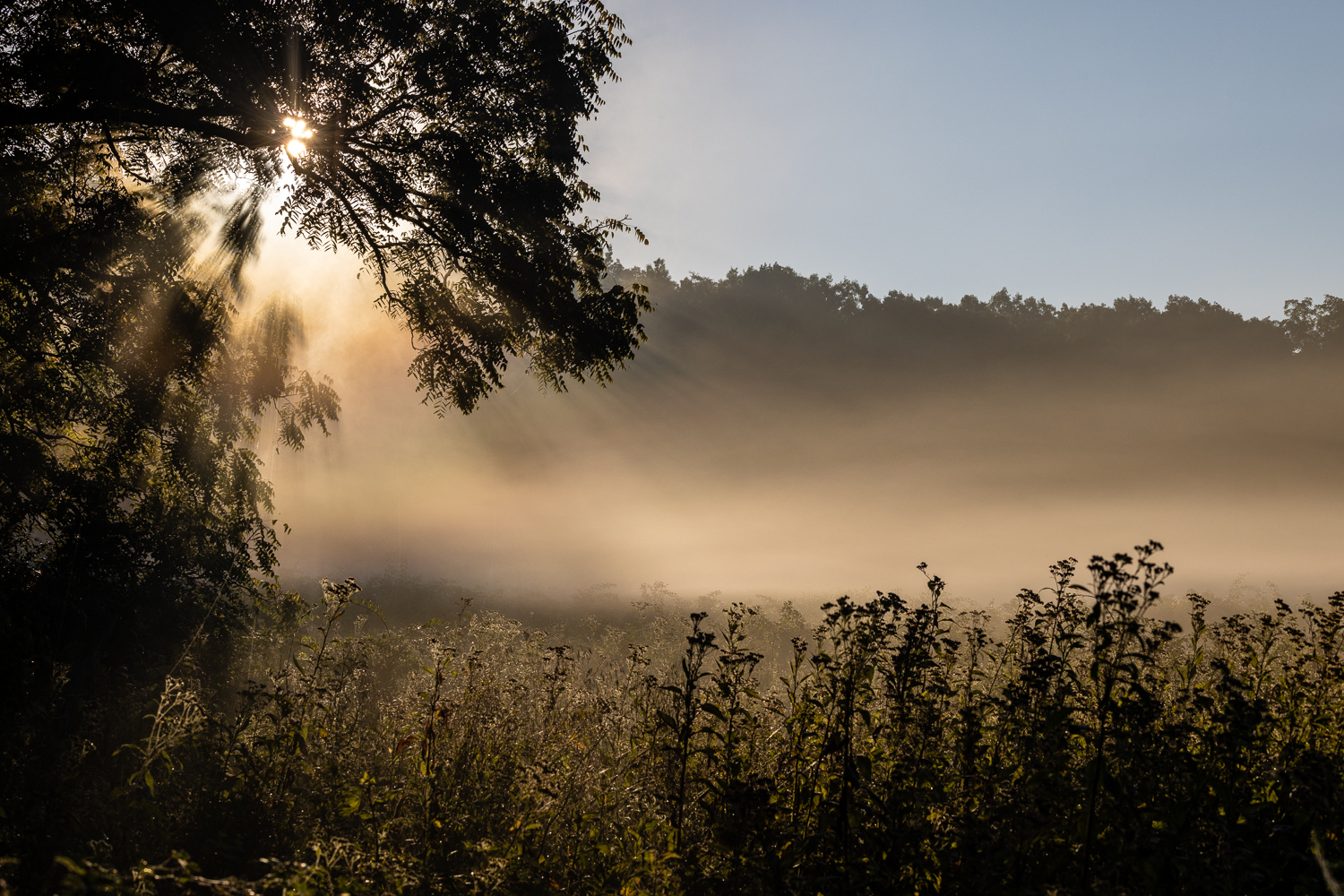
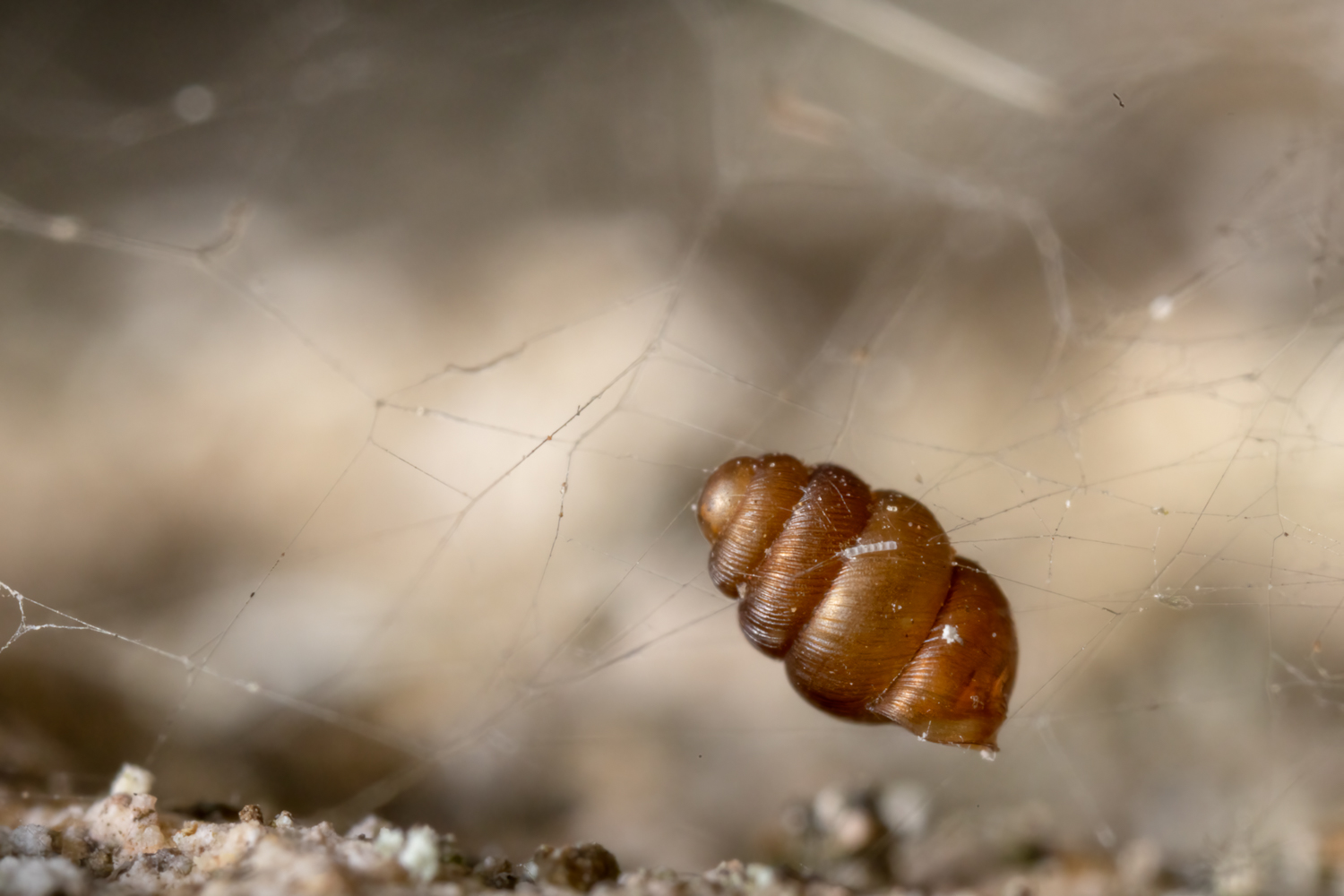
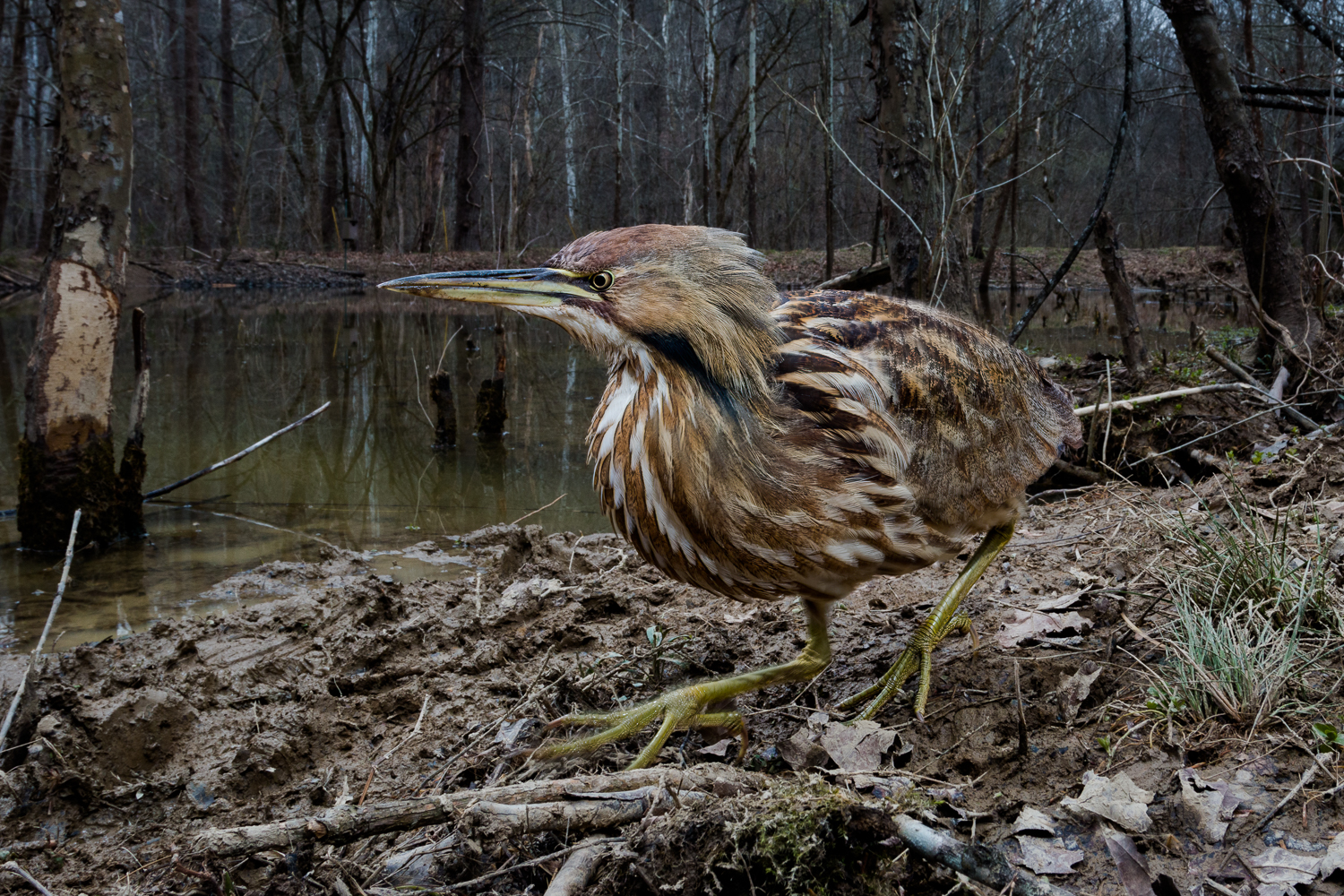
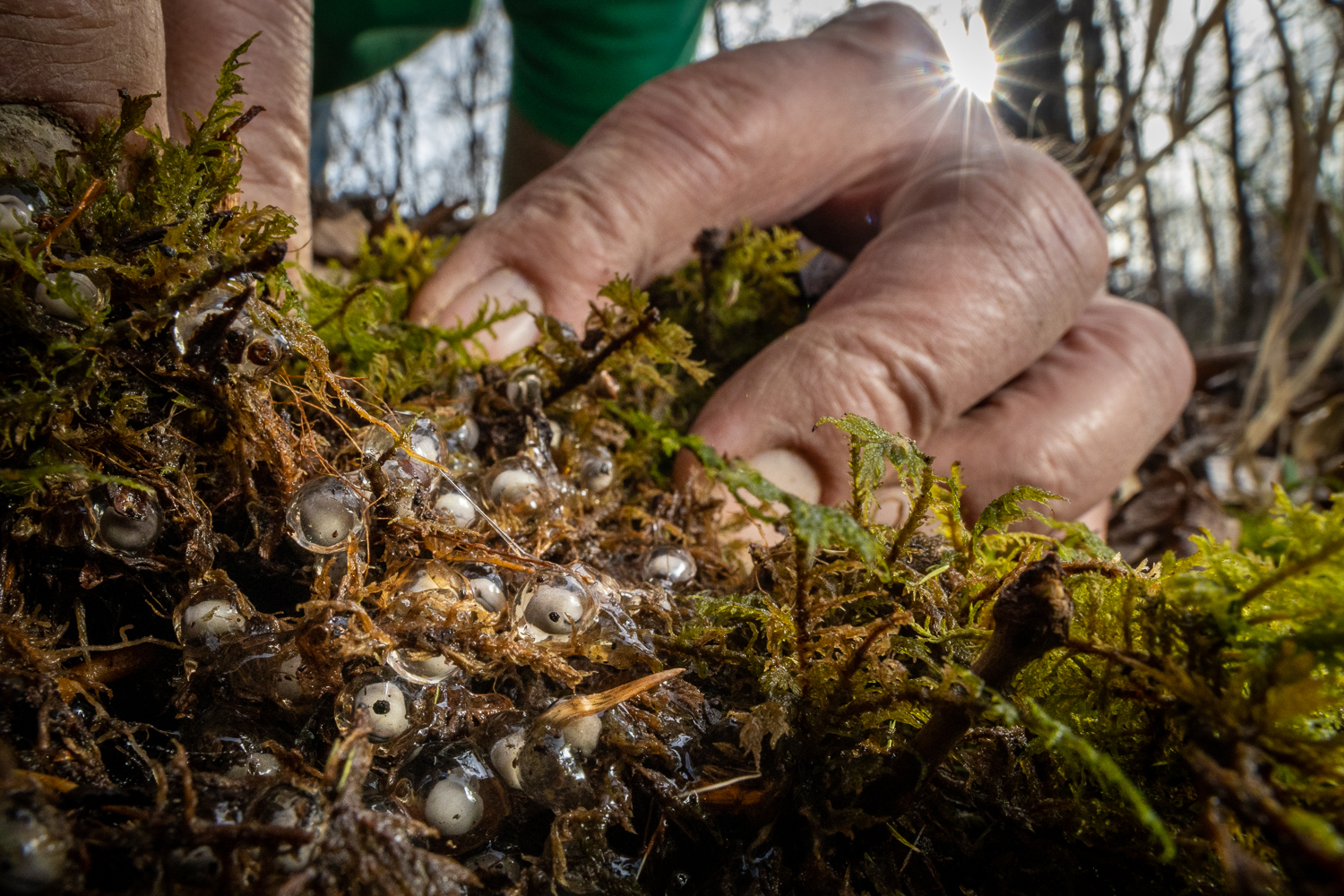
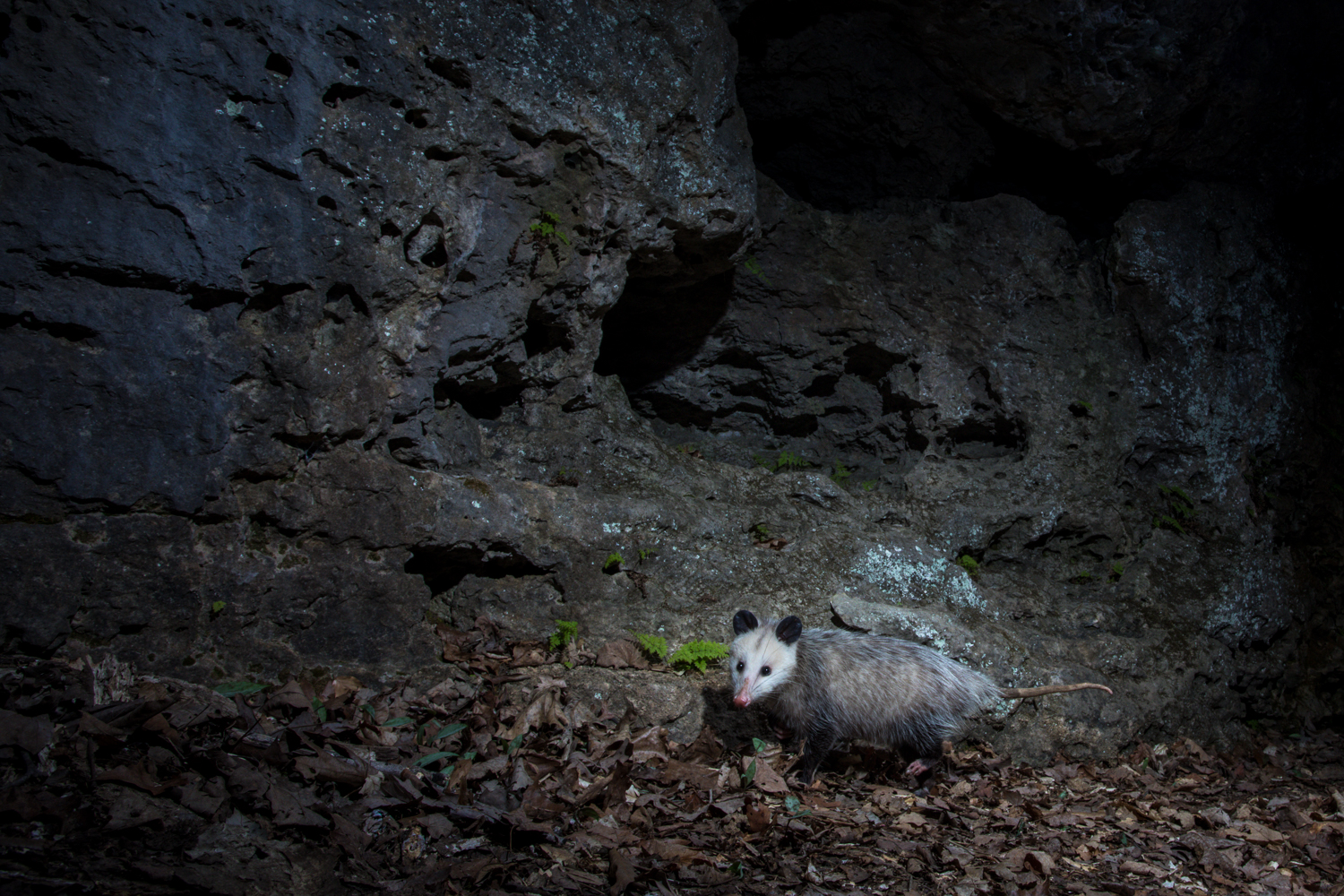
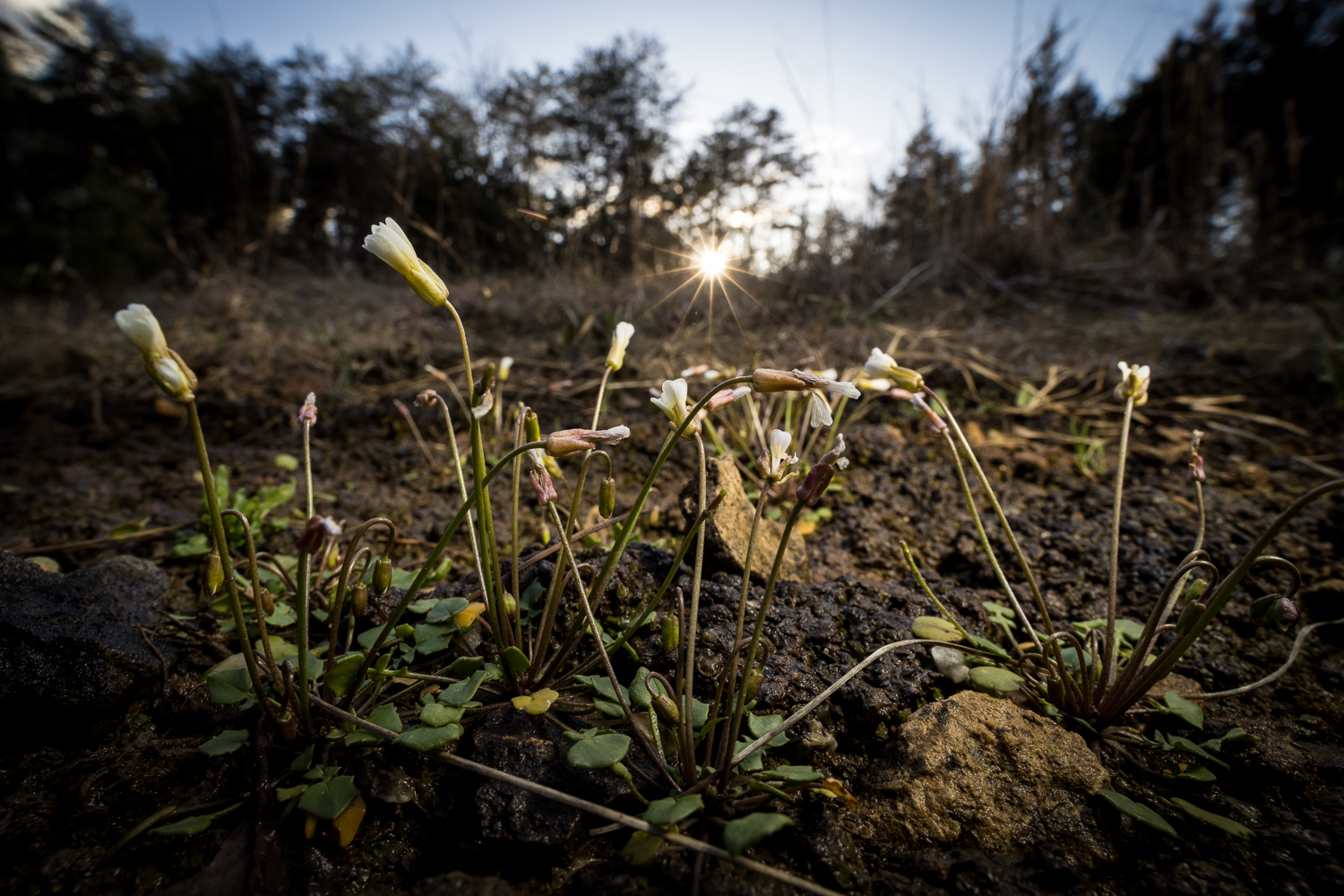
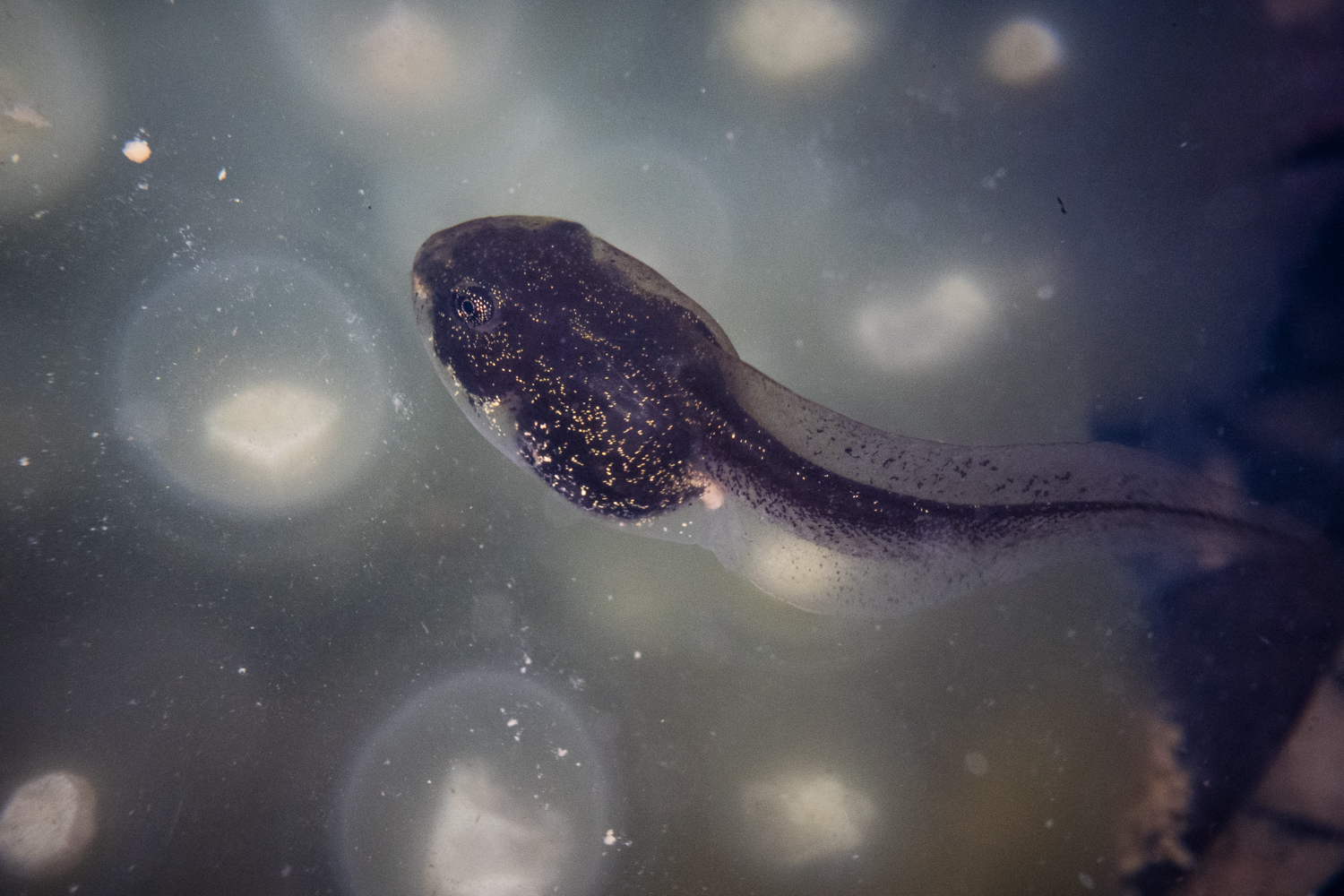
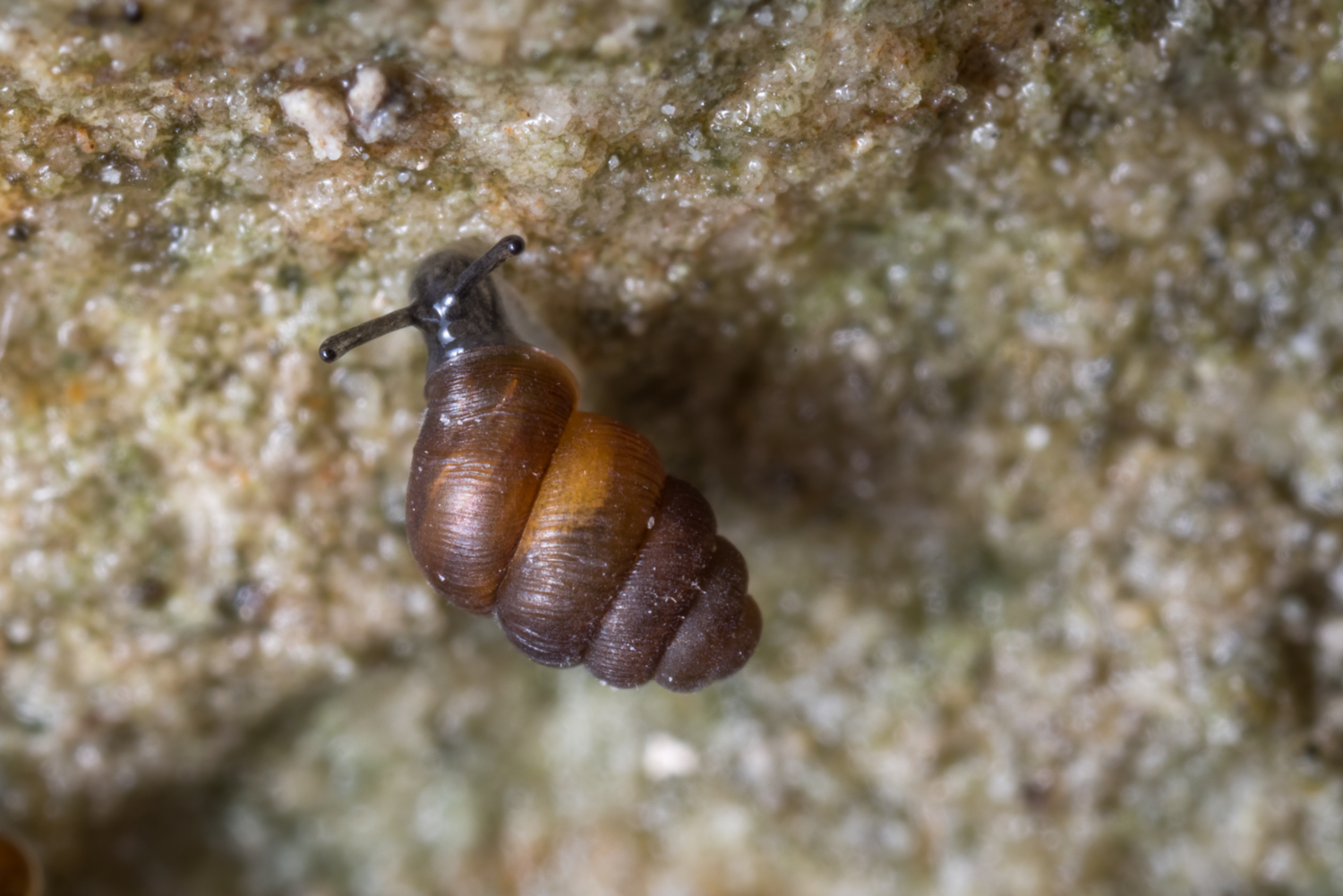
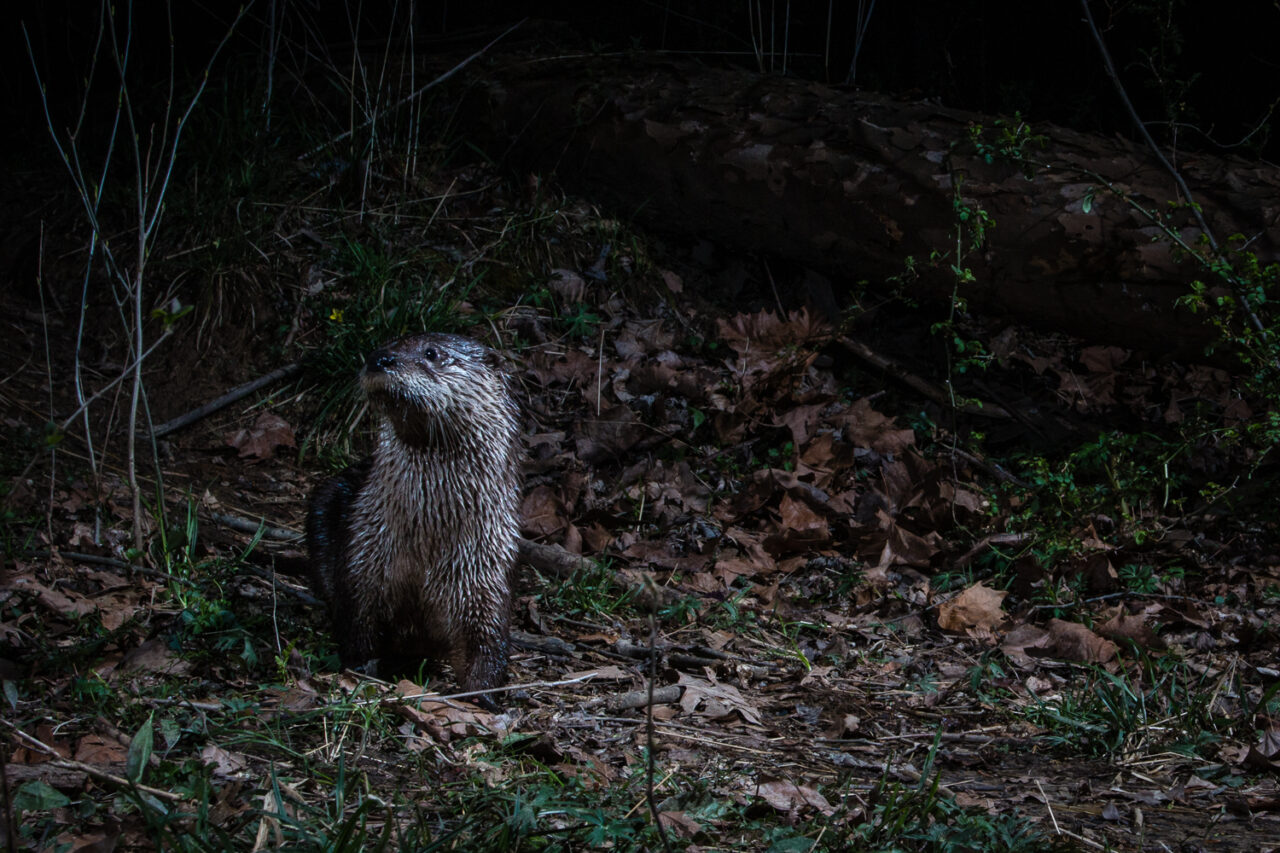
All images © Carla Rhodes



Leave a Reply